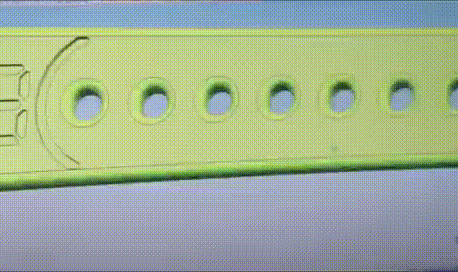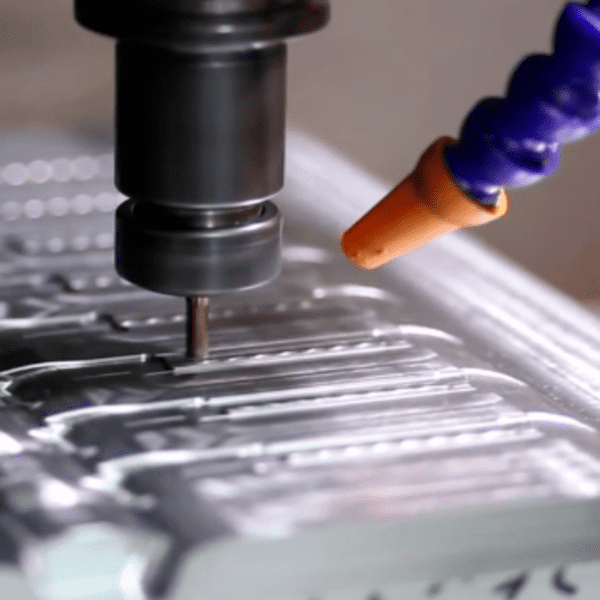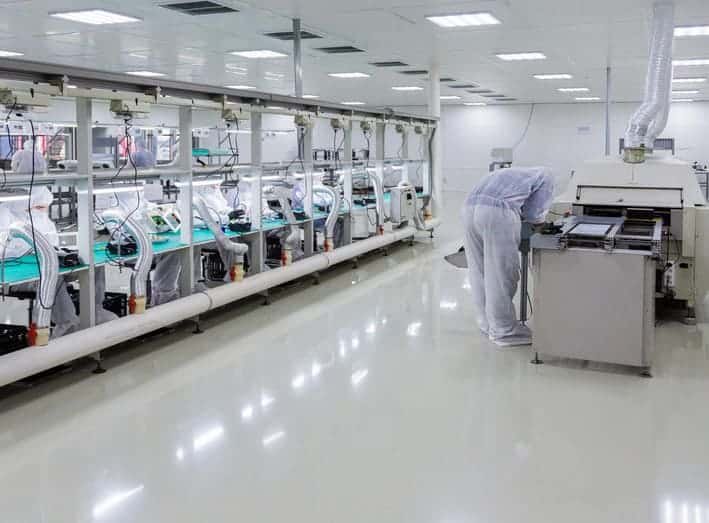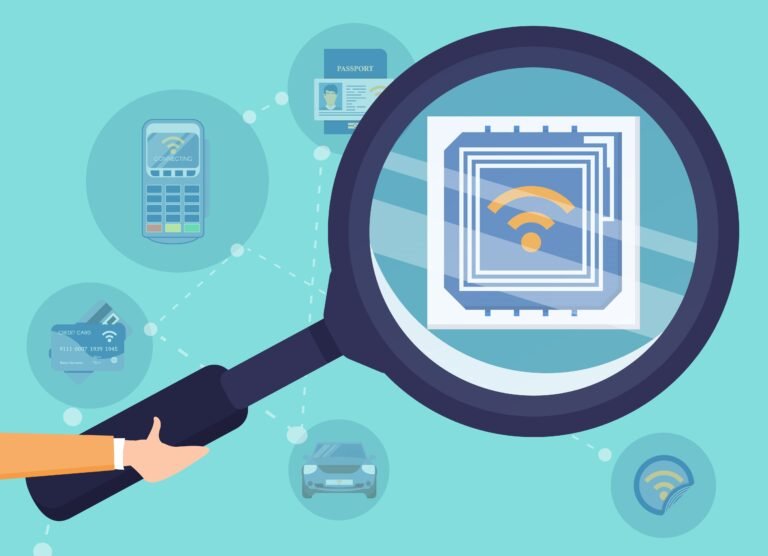Are you a wholesaler, distributor or importer searching for an RFID wristband to resell in your local market? Or are you the owner of a hospital, theme park or event looking for a reliable and effective solution? If so, step into our definitive guide to RFID wristbands and discover the knowledge you need about this powerful technology.
As A Top Provider of RFID Wristbands in China, we are proud to boast extensive expertise with the design, production, and global delivery of superior quality products. Let us be your one-stop source for all things related to RFID Wristbands!
In this article delves into all aspects of RFID technology and the many advantages of using their associated wristbands.So dive right in – let’s get started!
What RFID Technology is and How Does It Works
RFID, or Radio Frequency Identification technology is a cutting-edge wireless communication system that transmits data from an RFID tag – typically a miniature microchip – to an RFID reader. This convenient solution can be applied to cards, keys, wristbands and several other items in order to store valuable information related it them. An RFID reader allows us to access this info easily and utilize it for various purposes.
Components of RFID Technology
There are three primary components required for RFID technology to work:
- An RFID tag – A tiny microchip embedded into an object like a wristband or key.
- An RFID reader – The device used to read information from the tag.
- An antenna – This is used to send and receive electromagnetic signals from the reader to the tag.
By combining three components, RFID technology is able to securely transfer data quickly and easily between an RFID tag and reader. This makes RFID wristbands a cost-effective approach for tracking people or objects in an efficient yet reliable manner.
Overview of RFID Frequency Ranges and Types
RFID technology has completely changed the way businesses manage inventory, track assets and offer customers delightful experiences. With RFID’s capacity to store data safely and reliably associated with an item or person, it is becoming increasingly essential for many enterprises.
Radio Frequency Identification (RFID) technology relies on various radio frequencies to transfer information, the three most common being Low-Frequency (LF), High-Frequency (HF), and Ultra-High Frequency (UHF).
Low Frequency (LF) RFID: Operating within the 125-134 KHz frequency range, this technology is typically employed for applications in close proximity such as access control, animal tracking and keyless entry systems.
LF RFID Tag: Due to their high reliability and robustness against interference, readers are an ideal choice for use in extreme conditions.
High Frequency (HF) RFID: Boasting a frequency range of 13.56 MHz, the NFC technology has taken over our society and is widely used in an array of transactions including payments, inventory tracking, and even identification services.
HF RFID tags and readers are ideal for applications that need a read range of up to one meter; they transfer data at significantly faster speeds than other alternatives.
Ultra-High Frequency (UHF) RFID: Operating in the 860-960 MHz frequency range, this technology is perfect for applications including inventory management, asset tracking and supply chain management.
UHF RFID tags and readers provide unparalleled efficiency in high-volume applications with the capability to read multiple tags simultaneously at distances of up to 10 meters.
How RFID Wristbands Work
Utilizing radio frequency identification (RFID) technology, RFID wristbands are the perfect way to identify and track people or objects without having to physically handle them. These cutting edge devices can be found in a wide array of different industries including events, hospitality, healthcare and entertainment.
Materials Used in RFID Wristband Production
Manufacturing RFID wristbands typically necessitates the utilization of several core materials, such as silicone, PVC, nylon cloth, paper and more.
Silicone is an ideal option for its elasticity and longevity, while PVC stands out as a strong material that can withstand wear and tear.
Nylon is an ideal material for creating wristbands due to its lightweight, breathable qualities. It has become a go-to choice for athletic events worldwide.
Cloth wristbands are usually crafted from cozy cotton or resilient polyester fibers, and are typically used for promotional events.
Paper wristbands are an excellent choice for short-term use because they’re thin, light, and inexpensive.
Manufacturing Process of RFID Wristbands

The manufacturing process of RFID wristbands typically involves the following steps:
Step 1: Design – To begin the process, you’ll need to craft a design for your wristband. Utilizing computer-aided design (CAD) software allows for accurate measurements and customization so that you can create exactly what you envision.
Step 2: Material selection – After the design is finished, materials that accurately fulfill the client’s individual requirements are chosen.
Step 3: Production – To create the RFID wristbands, a combination of molding, cutting and printing methods are usually employed. The next stage is to actually produce them!
Step 4: RFID integration – After crafting the wristbands, each one is outfitted with an RFID tag that fits the application and frequency range requested. The type of technology used varies depending on how much data needs to be stored or received.
Step 5: Quality control – The last step is quality assurance. Every wristband must be inspected thoroughly to guarantee that it meets the client’s expectations and top-notch standards of excellence.
If you need robust, reliable RFID wristbands for any occasion, then look no further than our leading Chinese supplier. We use the finest materials and innovations in manufacturing to create durable yet customizable options designed to satisfy your needs perfectly. Reach Out today and discover how we can provide the best solution for your requirements; with us on board, nothing is impossible!
The Different Types of RFID Wristbands
RFID wristbands typically come in two main varieties: Passive and Active.
Passive RFID Wristbands
Passive RFID wristbands are the most common type of RFID technology and are mostly used for short-range identification and tracking needs. They don’t need a battery or other power source to operate, instead using an external reader’s radio signal when it comes into range. The tag then responds with its data that can be read by the reader: its unique identifier number! This enables quick access control, streamlined asset management and many more applications without worrying about powering up your device first – no batteries needed!
The different components and functions of Passive RFID Wristbands:
Power Supply
Passively powered RFID wristbands make use of the electromagnetic energy produced by an RFID reader to power their microchips and transmit data back. The reader emits a radio frequency signal which is then received by the antenna on the wristband, enabling it to carry out its functions with no additional external source of electricity required.
Modulator-Demodulator
The modulator-demodulator, commonly referred to as a “modem,” is an essential part of passive RFID wristbands. It serves as the bridge between microchips and readers so that data can be both transmitted and received.
Microchip
The passive RFID wristband features a microchip, which stores the unique identification number of the band. When an RFID reader beams out its radio frequency signal, the antenna on the wristband captures this wave and transmits it to the microchip. The chip then encodes this data with its personalized ID code before sending it back to be read by said reader.
Antenna
The antenna within a passive RFID wristband is specifically designed to pick up the radio frequency waves emitted from the RFID reader. Then, it processes this data and transmits it to its integrated microchip for further evaluation.
Active RFID Wristbands
For applications that need long-range tracking and identification, active RFID wristbands are the perfect choice. These powerful wristbands use a battery to power their tags so they can transmit data up to an impressive 100 meters away from an RFID reader! This range allows for comprehensive monitoring of your assets in any environment – making them ideal solutions for businesses looking to optimize efficiency and security.
The different components and functions of active RFID wristbands:
Power Supply
With an active RFID wristband, the power supply that fuels its transmission of signals is a battery embedded within. This eliminates any dependency on external sources so you can rest knowing it’s self-sufficient!
Microchip
The microchip featured in an active RFID wristband is analogous to the chip embedded within a passive RFID band. It encodes and stores the unique identifying number of said bracelet, as well as modulates and demodulates any signals that are transmitted from it.
Antenna
The antenna of an active RFID wristband acts as the intermediary between microchip and reader; sending information from one to the other. It sends out signals from the chip, providing data for readers to recognize, while also receiving instructions back in order to inform its microchip.
Battery
An active RFID wristband is powered by its own, built-in battery – allowing it to transmit signals without the need for an external energy source. Unfortunately, this power source typically has a much shorter shelf life than that of passive RFID bands.
Applications of RFID wristbands
Success stories abound with RFID wristband use across various industries and sectors, showcasing their indisputable value. Here are some examples of how these powerful tools have been effectively deployed in different areas:
Events
RFID wristbands provide a myriad of advantages for event planners and attendees alike. By integrating RFID technology into an event, security is improved, access control streamlined, and the overall experience enhanced. A prime example of this can be found at Electric Daisy Carnival (EDC) , where these convenient wristbands are used as tickets to gain entry through gates or booths; they also serve as forms of payment for food, beverage and merchandise purchases – connected directly to each attendee’s online accounts in order to add money or track transactions seamlessly!
Healthcare
To ensure patient safety and streamline processes, the University of California San Diego Health System implemented RFID wristbands in their maternity ward. Equipped with a wireless system, these bracelets enable nurses to monitor the whereabouts of newborns and their mothers- guaranteeing that each mother is only reunited with her rightful baby. This technology drastically improves security measures within the department while also allowing for more efficient operations.
Transportation
In Hong Kong, the Octopus card is a popular contactless payment system that utilizes RFID wristbands to provide commuters with an effortless public transportation experience. Beyond just ease of entry into trains and buses, these wristbands can also be used for purchases at various retail stores – making them a versatile yet convenient option! Furthermore, by utilizing advanced technology such as Radio Frequency Identification (RFID) in their design, riders don’t even need to take out their wallet or card; they simply tap on the reader instead.
Hospitality
When it comes to hospitality, RFID wristbands are a game-changer. Just look at what happened when the Water Park of America deployed them – guests were able to enjoy convenience and ease like never before, with one wristband functioning as their room key, credit card and water park pass all in one! What’s more is that these bands can be linked directly to the guest’s online account so they can safely add money or track purchases while having access to their rooms even on the go. This revolutionary technology is revolutionizing how we experience hospitality today!
Manufacturing
At General Motors, production workers are now equipped with RFID wristbands that expedite processes and help track inventory. This innovative approach works by linking the employees to a sophisticated inventory tracking system, making it easier for them to find various parts in no time at all – leading to an impressive reduction of manufacturing time and enhanced productivity!
Programming and Reading RFID Wristbands
RFID wristbands are available in several forms, from cards and bracelets to stickers. The data stored on them can be tailored depending on the type of tag used – think name, ticket number or access rights. And with multiple programming and reading methods out there for these devices, here’s a snapshot of some of the most popular:
Radio Frequency (RF) Programming and Reading
RF programming and reading is the most reliable technique for RFID wristbands, making it effortless to transfer data wirelessly with little fault. It all starts with an antenna situated on the bracelet which sends a signal to a reader that processes said transmission through radio waves. This action can be used for various objectives such as initiating an event or documenting information! By leveraging this cutting-edge technology, you’ll benefit from precise accuracy each and every time.
When speed and accuracy are paramount, RF programming and reading is the perfect solution for companies that must process large amounts of data rapidly.
Thanks to its cost-efficiency and straightforwardness, this technology has become a go-to choice for many different businesses.
RFID wristbands provide an additional layer of safety that other strategies can’t match, making them a great option for events where attendees need to be accurately tracked.
RF programming and reading are widely used in transportation, healthcare and event industries alike.
Infrared (IR) Programming and Reading
Infrared programming and reading is a popular approach to interact with RFID wristbands. The technology entails an IR LED in the wristband that sends out an infrared signal, which gets detected by a reader’s sensor; then this data is processed and sent off to its destination. This process makes it secure, easy and dependable for use in access control systems.
Infrared programming and reading provides an advantageous substitute to RFID technology with the same degree of precision and dependability. With its maneuverability, infrared is a perfect solution for companies that need to instantly update extensive data sets. Furthermore, it has been employed in various applications such as monitoring inventory in warehouses and access control systems.
Bluetooth Programming and Reading
Utilizing Bluetooth programming and reading is an extremely convenient way to interact with RFID wristbands. This method uses modern-day technology which allows the wristband to connect with a smartphone or tablet, permitting individuals to both program and read data from the device in mere seconds!
This process is widely accepted in the events industry, as it guarantees a secure and reliable data transfer. Furthermore, it’s incredibly easy to use; all users need to do is connect their wristband with their own device – no extra hardware or cables needed! That way businesses can quickly reap its benefits without any hassle.
Bluetooth programming and reading provides an additional layer of security, only allowing those with authorization to access the data. This makes it ideal for occasions in which there needs to be a guarantee that the attendees can be verified and monitored carefully.
Wi-Fi Programming and Reading
Wi-Fi programming and reading is another wireless technology that can be used to interact with RFID wristbands. Equipped with a Wi-Fi chip, these bands allow users to securely connect to a wireless network and send data wirelessly from one place to the next. This method of communication has been widely adopted in transportation industries as it allows companies to accurately monitor vehicle movement without any delays!
Wi-Fi programming and reading is an optimal way to safely transmit data, as it provides an extra layer of security that commonplace methods don’t. This makes this option a great selection for companies that require the assurance of their digital information’s protection. Furthermore, it’s simple to employ: all users must do is link up the wristband with a Wi-Fi network!
Each programming and reading method has its own advantages and disadvantages. For example, RF programming and reading is a common method because it allows for long-range communication and can be used in a variety of applications, but it can also be affected by interference from other radio signals. Bluetooth is a popular method for events because it allows for quick and easy interaction with smartphones, but it can also have limited range. It’s important to choose the right programming and reading method based on the specific needs and requirements of the industry and application.
Conclusion
RFID wristbands are a powerful asset that can revolutionize many industries, from entertainment to healthcare and transportation. With the most advanced technology and programming methods available, businesses gain access to essential data stored on these bracelets. This allows savvy organizations to make more informed decisions while streamlining operations for greater efficiency.
Carefully contemplate your business goals and needs before using RFID wristbands to secure the most fitting type of bands for you. Furthermore, team up with a dependable supplier who guarantees the right products and services that are tailored precisely towards meeting your firm’s objectives.
When incorporating RFID wristbands, it’s essential to make sure you have the correct systems and protocols in place for data management and security. With proper implementation, these bands can be an invaluable tool for optimizing operations, improving customers’ experiences, and ultimately propelling business success.
RFID wristbands can help businesses across multiple industries gain valuable insights and streamline operations to improve their business results. If you want to use RFID wristbands for your own company, make sure that you only work with a trusted and experienced supplier who understands your specific needs. By doing so, it will ensure the best possible outcomes from this powerful technology!





